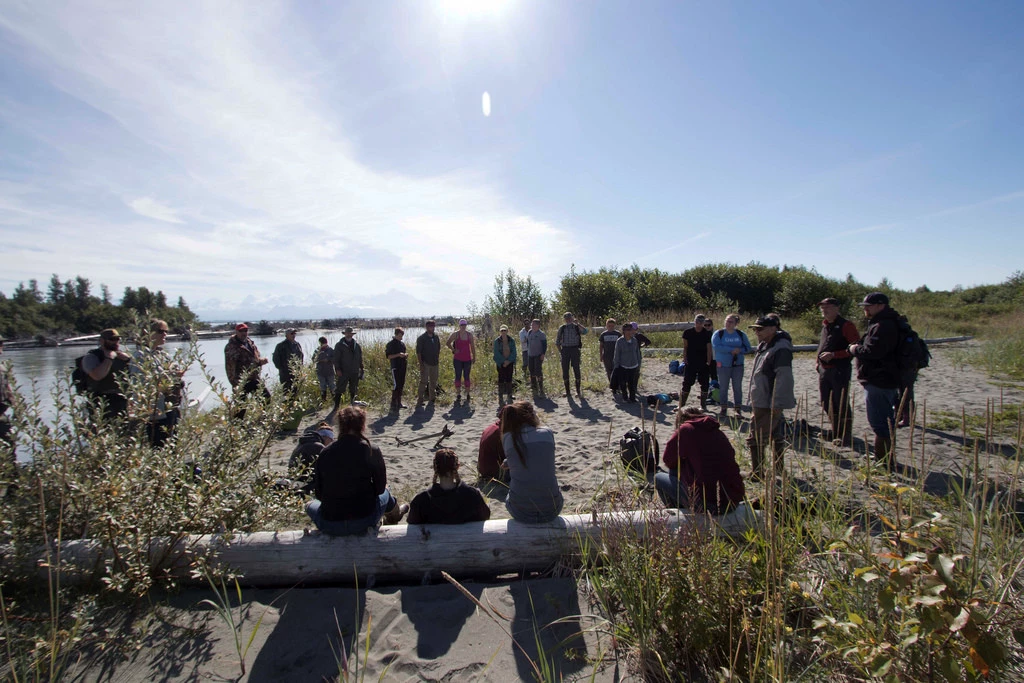Last updated: October 30, 2024
Article
Ethnographic Study of Dry Bay

NPS Photo
In 2017, elders and younger members of the Yakutat Tlingit Tribe flew to Dry Bay in Alaska with Glacier Bay National Park staff, to experience firsthand the land where many of their grandparents had lived. Elders shared the stories related to the Dry Bay landscape in Tlingit and English, and the younger tribal members explored the sites that were described in the stories.
The group bushwhacked on an abandoned road bed (now mostly used as a bear path) to reach two large rock outcrops on the upper flood plain of the Alsek River. The two rock outcroppings represent a man and his dog that were turned to stone when they looked at the raven. The nearby Bear Island landform represents the whale in the story of the Raven In The Whale.
Being in the places of these stories and on the land where earlier generations lived is a powerful way for the younger generation to continue to learn their cultural traditions from their elders and connect with the ethnographic landscape on a personal level.
The group bushwhacked on an abandoned road bed (now mostly used as a bear path) to reach two large rock outcrops on the upper flood plain of the Alsek River. The two rock outcroppings represent a man and his dog that were turned to stone when they looked at the raven. The nearby Bear Island landform represents the whale in the story of the Raven In The Whale.
Being in the places of these stories and on the land where earlier generations lived is a powerful way for the younger generation to continue to learn their cultural traditions from their elders and connect with the ethnographic landscape on a personal level.
More
- Dry Bay Project Jukebox: Interviews and stories of Dry Bay. Part of Project Jukebox, Digital Branch of the University of Alaska Fairbanks Oral History Program.
